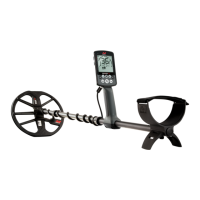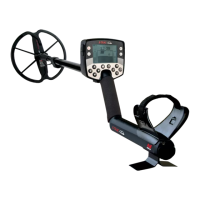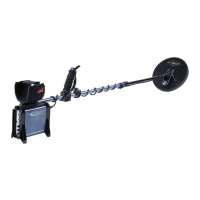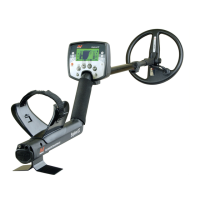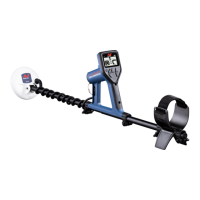* EQUINOX 900 only
14
CONTENTS
Best suited for gold nugget prospecting in mineralised goldfield locations.
Gold* Mode is for gold nugget prospecting� Generally, gold nuggets are found in remote goldfields where targets are more
sparsely located�
Gold* Mode does not have the same Target Tone options as the other Search Modes� Instead, it has its own unique
Prospecting Audio� This audio features a 'true' threshold tone (page 31) which provides more subtle variation in sound�
When a target is detected, the signal volume and pitch vary proportionally to the strength of the target signal�
Gold* Mode is suited to finding smaller surface gold nuggets (and some larger deeper ones) in mineralised ground�
Gold Profile 1* — Normal Ground
Gold 1 is suitable for searching for small gold nuggets in
‘mild’ ground� Most goldfield locations have a variable level
of iron mineralisation that will require an ongoing Ground
Balance adjustment, therefore Tracking Ground Balance
is the default setting� The audio Threshold Level and
Threshold Pitch is optimised for hunting for gold nuggets�
Gold 1 Multi-IQ processes a high frequency weighted
multi-frequency signal, while ground balancing for
mineralised soil�
Gold Profile 2* — Difficult Ground
Gold 2 is best for searching for deeper gold nuggets in
‘difficult’ ground conditions� Gold 2 has a lower Recovery
Speed, which will increase detection depth� However, more
ground noise in more heavily mineralised grounds may
result� Tracking Ground Balance is the default setting� The
audio Threshold Level and Threshold Pitch is optimised for
hunting for gold nuggets�
Gold 2 Multi-IQ processes a high frequency weighted
multi-frequency signal, while ground balancing for
mineralised soil�
Gold Detecting Hotspots
The best places to go detecting for gold
nuggets are where gold has previously been
found� Surrounding areas with very similar
geology are also worth exploring� Many
government mining agencies publish maps
of goldfields locations and offer advice
on obtaining relevant fossicking or hobby
prospecting licences�
Go detecting in tailings from goldmine
sites, old diggings from the 1800s, in and
near streams where gold panning is carried
out, arid dry-blowing locations and old reef
mine dumps and slopes�
Difficult Gold Areas — Hot Rocks
‘Hot’ rocks are commonly found in gold
prospecting locations� These are rocks
that are mineralised differently to the
surrounding ground� A highly mineralised
rock buried in mildly mineralised ground
would be considered to be a hot rock�
Hot rocks can easily be mistaken for gold
nuggets� The Target ID can assist here,
with hot rocks typically having a negative
Target ID number and gold having a positive
ID in the very low conductive range�
Gold*
Typically Small Gold Nuggets
Typically Hot Rocks
Target IDs 1 and 2 often indicate
low conductive small gold nuggets�
Hot rocks are generally found in the
ferrous range�
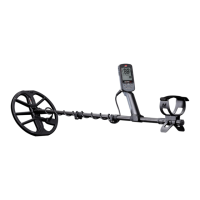
